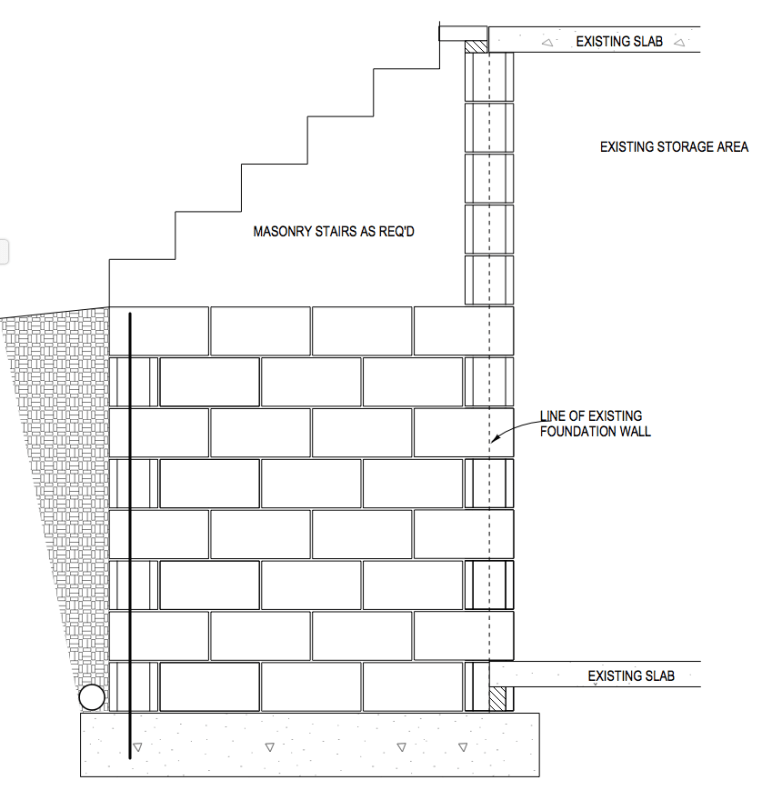XR250
Structural
- Jan 30, 2013
- 5,955

I have residential basement storage area under a porch where the foundation wall has failed (buckled inwards) behind some existing masonry stairs. I am assuming the the existing stair footing does not extend to basement level and, as such, added sufficient surcharge to the soil to fail the wall. My idea is to construct a new set of stairs with a foundation that extends to basement level. The masonry platform would serve as a portion of the basement wall and the stairs would serve as the remainder. The stairs are 11 ft. wide.
Questions...
1) Does anyone have a better solution. (the owner wants masonry stairs)
2) How would you reinforce the platform - other than ladder wire? I am assuming hollow CMU. Seems there is enough mass here to prevent sliding and overturning.
Thanks!

